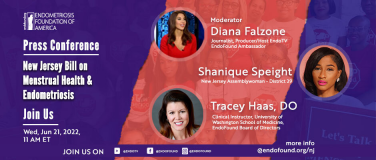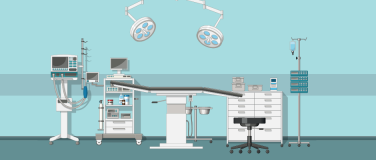Historic news for the endometriosis community: AAGL has just announced a critical update to the International Classification of Disease (ICD) diagnosis codes for endometriosis, codes that had not been updated in more than 40 years. The update includes more than 100 new diagnosis codes to better characterize the distribution and depth of endometriosis. This is an enormous win for our collective mission to advance the care, treatment, and research of endometriosis and we congratulate friend of EndoFound Dr. Ted Lee as the AAGL liaison who spearheaded this momentous undertaking and change that will improve the lives of so many with endometriosis.
ICD codes are critical for the care of any disease. They allow accurate numbers about patients with the disease, determine treatment and management planning, assess disparities in care, improve accurate diagnosis, and allocate resources appropriately.
In the case of endometriosis, these codes hadn’t been updated since the 1970s, resulting in medical practitioners using only a few codes for endometriosis, codes which could not possibly account for the multi organ distribution and intra- and extra pelvic location of many cases. As excision specialist and EndoFound board member Dr. Karli Provost Goldstein explains, one code had previously been applied to endometriosis diagnosis ICD N80.9, and the surgery itself similarly has only one code to define it, which in no way reflects the complexity of the disease: “58662 laparoscopy, surgical; with fulguration or excision of lesions of the ovary, pelvic viscera, or peritoneal surface by any method.”
The ICD diagnosis coding update should not be confused with surgical CPT coding (the latter of which defines how and where the disease is treated operatively); however, proper diagnosis coding directly affects the surgical CPT coding and billing system. Today’s announcement doesn’t yet include an update or change in CPT surgical codes but hopefully this paves the way for future changes there as well.
Today, thanks to Dr. Lee’s work and many other medical practitioners involved in the process, these diagnosis codes now accurately represent the distribution of the disease and its often multi-organ location, which will hopefully, in turn, impact improvements to the CPT codes and result in better treatment for more patients. “We look forward to many changes to come for patients finally with a comprehensive way to define their disease and eventually be able to better define and bill for the complex surgery required,” Goldstein adds. “As an endometriosis surgeon and previous patient myself, this feels like a great stride forward.”
“We're thrilled about this long overdue but monumental step forward to legitimize the complex, multi-organ nature of endometriosis surgery,” says Dr. Tamer Seckin, excision specialist and co-founder of EndoFound. “This will open doors for the patient community, improving patient treatment and providing critical data for research advancements. A great thank you to Dr. Lee and everyone else whow orked on this,”
This is a historic development for endometriosis care that will increase research and treatment options in the future, paving the way for many more critical advancements and set to make the difference the endometriosis community has always needed—a change that has been long overdue for endometriosis. Today we’re one step closer to that change, one step closer to ensuring that every person with endometriosis can receive the proper treatment they need.









